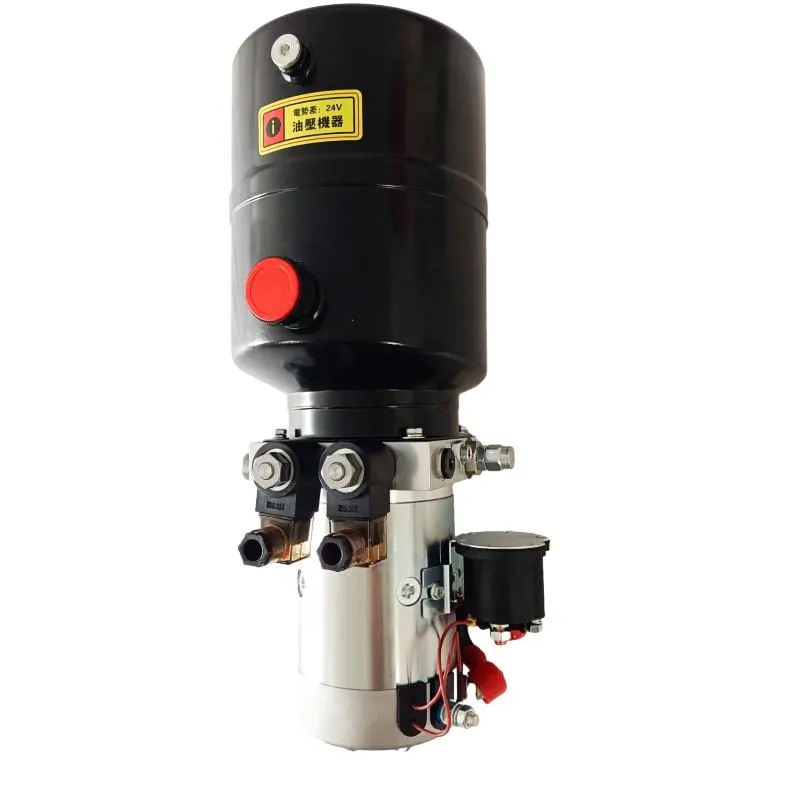Oct . 22, 2024 05:49 Back to list
Hydraulic Damping Cylinder Solutions for Enhanced Performance and Stability in Various Applications
Understanding Hydraulic Damping Cylinder Products A Comprehensive Overview
Hydraulic damping cylinders play an integral role in various industrial and automotive applications, providing the necessary control over movement and vibration
. These components utilize hydraulic fluid to absorb and dissipate energy, ensuring smooth operation in heavy machinery, vehicles, and other systems requiring controlled motion.At the core of hydraulic damping cylinders is the principle of fluid mechanics. When an external force acts upon a system, the hydraulic fluid within the cylinder transfers this force to a piston, which then moves within a sealed chamber. The resistance offered by the fluid creates a damping effect, which reduces oscillations and stabilizes the system. This technology is particularly crucial in environments subjected to shocks, vibrations, and sudden movements.
One of the primary applications for hydraulic damping cylinders is in the automotive industry, particularly in vehicle suspension systems. These systems need to manage the impact of irregular surfaces on the vehicle’s operations. By incorporating hydraulic damping cylinders, manufacturers can enhance the ride comfort and stability, improving handling and safety. The adjustable nature of these cylinders allows for customization based on specific vehicle design and performance requirements.
In industrial settings, hydraulic damping cylinders are also employed in a variety of machinery. For example, they are commonly used in construction equipment, such as excavators and cranes, where the ability to absorb shocks and vibrations is essential. The presence of these damping systems helps prolong the life of the machinery by reducing wear and tear on mechanical components. Moreover, hydraulic dampers are vital in manufacturing processes, where smooth and controlled movement is necessary for precision and efficiency.
hydraulic damping cylinder products

Another significant application of hydraulic damping technology is in aerospace. Aircraft landing gear systems often incorporate hydraulic damping cylinders to ensure controlled landings. These cylinders absorb the impact during touchdown, protecting the airframe and ensuring passenger comfort. The reliability and effectiveness of hydraulic damping are crucial in high-stakes environments like aviation, where failures can lead to catastrophic consequences.
The design and construction of hydraulic damping cylinders vary based on their intended application. They can be single-acting or double-acting, depending on whether they absorb shock in one direction or both. Additionally, engineers can customize the damping characteristics by adjusting parameters such as fluid viscosity, cylinder size, and piston design. This flexibility makes hydraulic damping cylinders suitable for countless applications across diverse industries.
While the benefits of hydraulic damping cylinders are clear, it is essential to consider the maintenance and operational aspects of these products. Regular inspection and servicing are necessary to ensure that the system remains efficient and free of leaks. Over time, hydraulic fluid can degrade or become contaminated, which may impact its performance. Users must remain vigilant and adhere to maintenance schedules to maximize the lifespan and functionality of their hydraulic damping systems.
In summary, hydraulic damping cylinders are vital components in a wide range of applications, from automotive suspension to industrial machinery and aerospace systems. Their ability to absorb shocks and provide controlled movement enhances the performance, comfort, and longevity of various products. Understanding the fundamental principles, applications, and maintenance of hydraulic damping cylinder products is crucial for industries relying on these technologies to operate efficiently and safely. As innovation continues to advance in hydraulic systems, the future of hydraulic damping cylinders looks promising, with potential improvements in performance and adaptability across various applications.
-
Fork Lift Power Units - Hebei Shenghan | Efficiency, Reliability
NewsJul.13,2025
-
1.5-Ton Turbocharged Cylinder-Hebei Shenghan|Hydraulic Solution,Energy Efficiency
NewsJul.13,2025
-
Auto Hoist Power Units-Hebei Shenghan|Efficiency&Industrial Lifting
NewsJul.13,2025
-
Double Acting Power Units-Hebei Shenghan|Hydraulic Solutions,Industrial Efficiency
NewsJul.13,2025
-
1.5 Ton Lifting Cylinder 70/82-40-290-535 - High-Performance Hydraulic Solution | Hebei Shenghan
NewsJul.13,2025
-
Fork Lift Power Units - Hebei Shenghan | Efficiency&Reliability
NewsJul.13,2025
